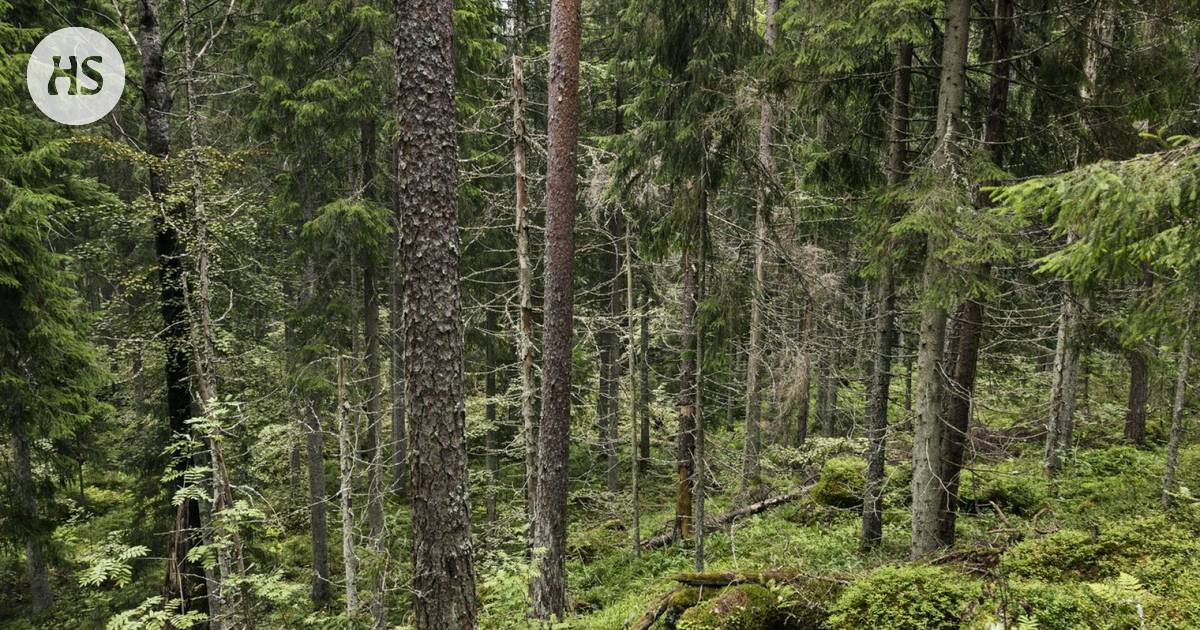Group Finnish forest scientists are criticizing a study that received a lot of attention, according to which the carbon reserves of the world’s forests would increase only slightly if all logging were stopped.
HS told in May from a study that appeared in the prestigious Science journal. According to it, the above-ground carbon stocks of forests would increase by only 15–16 percent from the current level if humans left the forests alone.
Replenishment of carbon stocks would correspond to four years’ worth of carbon dioxide emissions on Earth, which, according to the researchers’ assessment, was small in terms of preventing climate change.
Now four Finnish forest researchers state that the calculations are wrong, at least for Finland and possibly more widely.
According to them, the ability of forests to sequester carbon is much greater than what the research concluded.
Science magazine has just published the Finnish comment writing as a continuation of the original study.
In the original study, there were no separate figures for Finland. However, based on the diagram in it, the carbon stock in Finland would increase by about 15 percent after the cessation of forestry, i.e. the same amount as the average in the whole world.
”
“You can’t see things as precisely from the sky as you can from the ground.”
Finns however, a calculation based on more detailed data gives a completely different result.
According to this calculation, the above-ground carbon reserves would increase by 58 percent, even on a conservative estimate, and probably even by a hundred percent.
In the latter case, the carbon stock would therefore double if the forests were left alone.
To the Finnish quartet a research professor at the Natural Resources Center (Luke). Lauri Mehtätalo tells what the difference in estimates is due to. According to him, the original research was based on satellite mapping, while the Finnish data was obtained from the terrain.
“You can’t see things as precisely from the sky as you can from the ground,” says Mehtätalo.
The Finns’ own assessment is based on Luke’s inventory of the country’s forests. It has been monitoring the forest sector from experimental areas around the country for more than a hundred years.
Researchers estimated the amount of trees in conservation forests and then assumed that there would be similar trees in economic forests. They also took into account that conservation forests are typically on more rugged lands than economic forests.
This is how they came to the conclusion that the number of trees would increase by 58 percent.
They got an even bigger increase, i.e. almost one hundred percent, when they made the calculation on the assumption that there would only be old protection forest in the place of commercial forests.
Mixed the estimates of the international and Finnish groups only deal with living terrestrial biomass. A lot of carbon is also bound to the soil and dead trees.
According to Mehtätalo, conservation forests do not necessarily bind much more carbon to the soil than commercial forests. In contrast, dead trees significantly increase the carbon stocks of conservation forests.
Mehtätalon and according to the partners, the carbon sequestration of the entire world’s forests is probably greater than what the original study said.
“First of all, protected lands are usually in more rugged places, and the analysis does not take that into account. If we hadn’t taken that into account, our estimate would have been much lower.”
In addition, remote sensing brings its own problems, because the estimate of the volume of the stand is based on averages. The method therefore does not accurately describe areas where there is only very little or very dense vegetation, such as in conservation forests.
“It means that the biomass of protected forests is probably underestimated.”
Even with remote sensing, it is not possible to properly estimate the amount of trees in the area if the forest canopy is closed and the satellite cannot see below it.
”
“In the long term, logging restrictions would start to reduce growth.”
Finnish researchers agree with the authors of the original study that the ability of forests to sequester carbon is limited. However, the limit comes much later than the other group counted.
“The message of the original study was important. It cannot be imagined that our forests will be carbon sinks forever, but at some point the limit will be met.”
The trees grow bigger, but at the same time their growth slows down and before long stops.
Milk house is of the opinion that it is worth increasing the carbon sink in the short term by limiting logging, but not in the long term.
“In the long term, logging restrictions would start to reduce growth. We have a few decades to keep logging moderate, but after that it would start to limit growth.”
